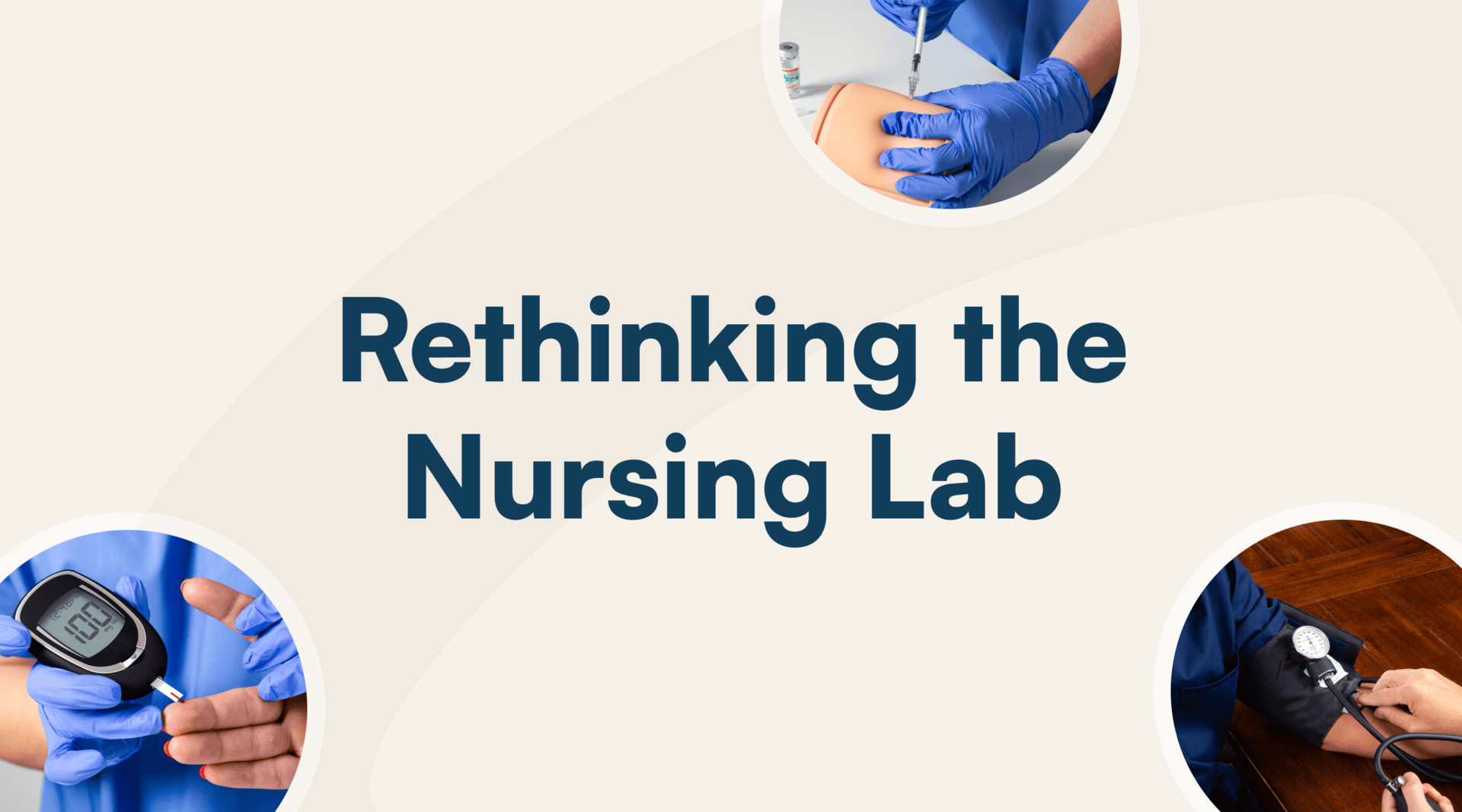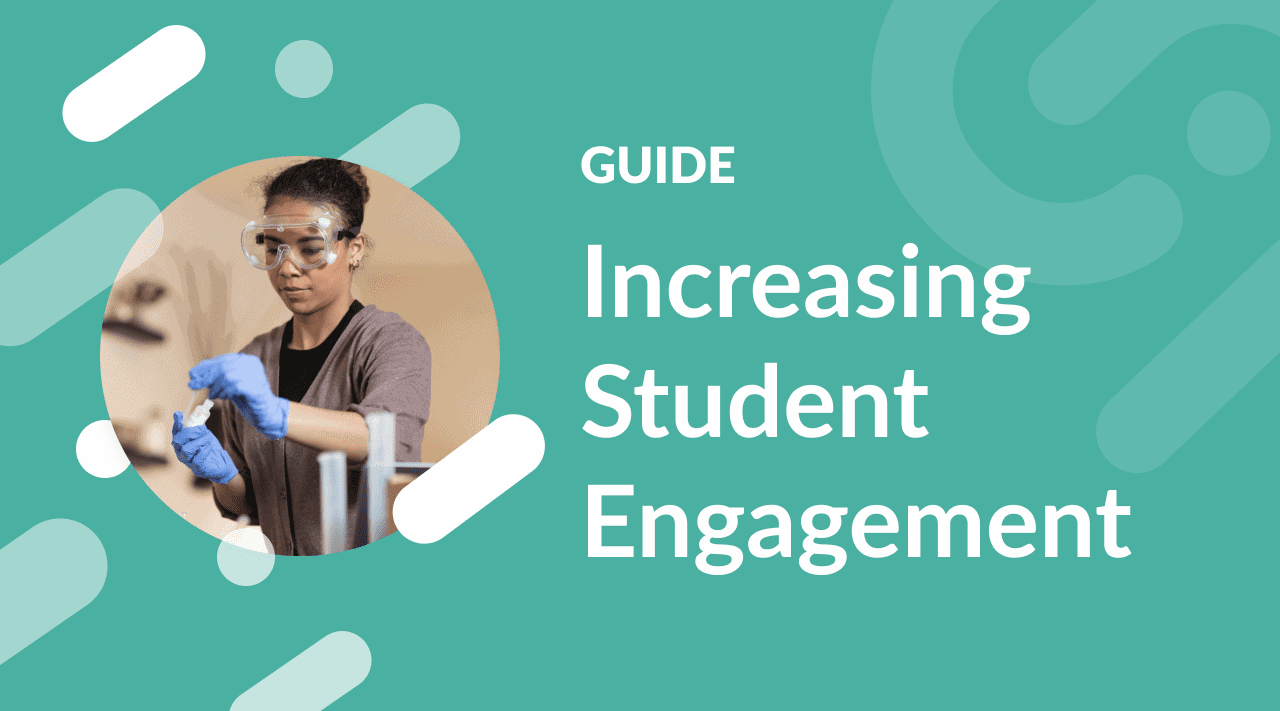Summary
Think back to your college days…what classes do you remember most? Chances are, regardless of major, they’re the ones that unexpectedly changed your perspective, where an instructor seemed to go the extra mile to help you, or the ones in which you felt a true sense of belonging. What your most memorable classes all have in common is that they engaged you.
Student engagement is the degree of attention, curiosity, interest, optimism, passion, and motivation students show to learn or when being taught. It takes into account the cognitive and social-emotional relationship between the student and the class community, the student’s peers, the instructor, and the curriculum — and significantly impacts performance, achievement of learning outcomes, and a student’s overall learning experience. And it’s considered an important factor in the success of students taking online science lab courses.
If you’re new to or have just a couple years of experience teaching lab courses online, this guide is for you. In addition to understanding the different learning approaches you can take to engage students in your online labs, you’ll gain valuable insight into how to create a sense of classroom community that deepens students’ belonging and leads to a more enriching online learning experience.
If you’re a seasoned online science instructor, this guide will give you a fresh take on how to approach your labs for maximum engagement. You’ll pick up tips that will help you engage students in new ways and discover ideas that can help you build online learning experiences that are just as rigorous as in-person lab experiences.
Why Increasing Online Student Engagement Matters
Engaging students in general is challenging and requires effort. Engaging students who are learning online presents a unique set of challenges. Because they’re not physically present in a lab, online students lose more of the opportunities to interact, collaborate, and receive real-time feedback from instructors — all of which can create a sense of isolation and impact a students’ confidence and morale. Add to these challenges the fact that most of your students are juggling multiple responsibilities while taking your course, it’s no surprise online learners tend to struggle more than those in face-to-face courses, which has typically led to a 10-20 percent lower retention rate than traditional courses.
Still, student demand for pursuing a higher education hasn’t waned. In fact, according to the 8th installment of the Changing Landscape of Online Education (CHLOE) report, institutions report strong growth for fully online programs (36%) and hybrid programs (20%), in the face of stagnant or sharply declining enrollment of traditional undergraduates in face-to-face programs (roughly 24%). And in recent research around the state of online STEM courses, more than 90% of students said they want to be able to take science courses online.
Plus, more than 80% of students said online labs made their course more engaging. That means using labs is a meaningful opportunity to make an online science course more engaging if approached the right way. When a student feels motivated to participate in class, you’ll see signs they want to engage; and an engaged student is more likely to persist through challenges in learning, develop a deeper understanding of the material, and achieve learning goals. In this guide, we focus on strategies proven to help students more deeply engage in online labs. We’ll explore both instructor-driven and student-driven engagement tactics that are intended to counter many of the unique challenges online students face.
4 Strategies to Increase Engagement in Online Labs
| 1. Encourage more experiential learning, so you can create an active learning environment that activates students’ different learning styles. 2. Provide frequent guidance & set expectations, which include a range of instructional materials, expectations for participation, and feedback for improvement. 3. Use a variety of mediums like video, the learning medium of choice for college-age students, and other multimedia that includes orientation to the course and time management. 4. Create opportunities for connection, communication, and collaboration with you and among students to enable social learning. |
1. Learn by Doing: Use Experiential Learning to Activate Learning
Quality online courses promote involvement and activity, which is why effective labs align with Quality Matters standards. Quality Matters is the global organization leading quality assurance in online and innovative digital teaching and learning environments, whose standards such as standard 5 promote learner interaction and provide opportunities for active learning. While every college and university defines student engagement slightly differently, and benchmarks evolve over time, one of the key factors to consider when defining what meaningful engagement looks like in your lab is: Involvement & Activity.
Scientists agree. There is no replacement for hands-on learning, and nowhere is this more relevant than in an online science lab. Research by The American Chemical Society shows that students who engage in well-designed laboratory experiences have a greater opportunity to develop problem-solving and critical-thinking skills, as well as gain exposure to reactions, materials, and equipment. ACS research also shows that sustained investment in hands-on experiences help inspire students to further their education and prepare them for high-technology careers by fostering skills sought by potential employers.
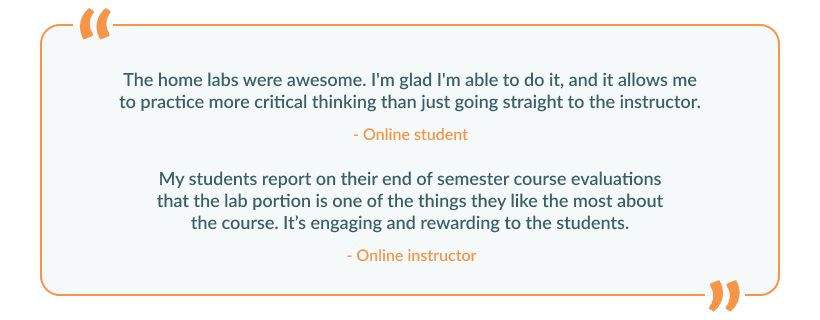
This is where experiential learning comes into play, and while it can be difficult to facilitate when students aren’t in the room, research shows how critical it is for enhancing student learning. The idea is that for students to break out of their usual passive mode of learning, they have to DO something to activate their learning in order to gain a deeper understanding of the course content. Hands-on learning achieves that.
Different Learning Styles to Activate
| The theory around learning styles posits that different students learn best when information is presented to them in a particular way. – Kinesthetic: Tactile learning – Visual: Seeing and observing – Auditory: Hearing and listening – Reading and Writing: Subtype of visual with emphasis on writing for understanding |
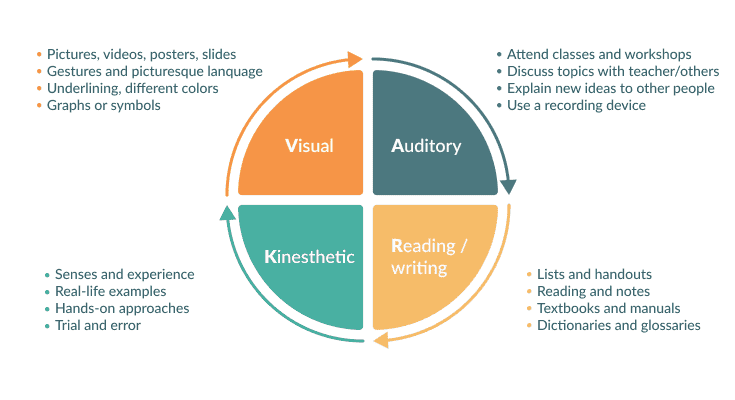
Enter the hands-on science lab. More than 80% of students say they want their online labs to include a hands-on component, and 84% of instructors prefer incorporating hands-on labs into their online courses because it better equips students with the knowledge and skills needed from the course. Plus, when you use hands-on experiments in your lab, you’re able to reach ALL of your students because each type of learner can benefit from the experiential learning activity.
As one student put it. “I really enjoyed doing the at-home hands-on labs for my biology class. It made it fun and so that I wasn’t 100% glued to the computer. Being a distance learning student, completing labs at home is very important to my degree progress and success.”
Through the process of conducting an experiment — from setting up to logging observations and analyzing results — each student will have an opportunity to engage just a bit deeper with your course material in a way that suits them and that leads to stronger critical thinking and problem solving skills.
How To Promote Active Learning with Hands-On Labs
With this approach, students gain the hands-on experience of using equipment and carrying out experiments, just as they would on campus. In fact, comparative studies suggest that students learn just as much from these labs and in ways similar to those who attend in-person labs (Casanova et al., 2006; Reuter, 2009).
Research out of Stephen F Austin State University focused on the effects of hands-on experiences related to student engagement and performance achievement in chemistry. These studies showed that student participation in hands-on laboratory experiences vs computer simulated experiences actually improved students’ attitudes and interest in the topic being taught, kept students more engaged, and led to new skill building and better performance.
Further research reinforces these findings. More than 80% of students say online labs make their courses more engaging, and 71% of instructors using hands-on labs felt their labs were comparable to an in-person experience— better preparing their students to apply the skills they have learned to the real world.
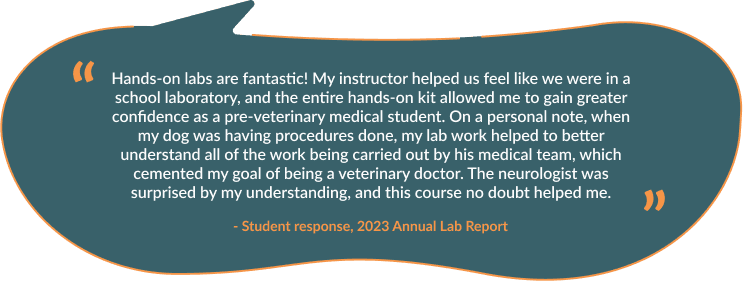
Use the hands-on approach to:
✔ Engage students in a more authentic lab experience, helping them dig deeper in their learning to master course concepts.
✔ Elevate the quality of the online learning experience by helping students learn the physical skills necessary to run an experiment using the scientific method.
✔ Increase inclusivity by activating all the different styles of learning.
Preparing Hands-on Kits
Hands-on labs use tools, equipment, tests, and procedures to provide students with an opportunity to do science from home. No surprise, this approach relies on ready-made science lab kits that contain lab-grade materials and equipment at a scale so that students can safely handle them without direct supervision. There are a few ways to approach the kits.
Student-Sourced Lab Kits
For student-sourced kits, an instructor would typically give students a shopping list, and each student is responsible for securing the items needed for experiments. One thing to keep in mind here is that some items may not be readily available or easy to purchase, which also limits the kinds of experiments you can include in your course. There’s also an element of inconsistency across each student’s experiment.
Institution-Sourced Lab Kits
For institution-sourced kits, you — the instructor — source all of the materials and then are responsible for shipping or getting materials to each student. In addition to carefully planning all of your lessons and experiments in advance so you can let students plan for course costs, you’ll have to organize your time around securing materials and shipping to students.
Vendor-Sourced Lab Kits
For vendor-sourced kits, an instructor partners with a company offering at-home lab kits designed for use in online college classes. These kits can be tailored to meet the needs of nearly any science curriculum, and instructors coordinate what they require with a specific company before the class starts.This approach creates consistency in materials for students, and you have the most flexibility in what kinds of experiments you use as a part of your lessons. The vendor handles shipping, so this approach takes a load off your plate!
Finally, it’s important to note that not every lesson can be a hands-on experiment. Consider mixing virtual labs, a.k.a online science lab simulations, to balance costs in your course and make it more practical. For example, labs calling for large apparatuses would make shipping impractical and costly. Plus, with a virtual lab, you can have students observe the unobservable or abstract objects, such as light rays. When coupled with hands-on labs, virtual labs can add variety to your course and be an effective way to keep students engaged.
For a deeper dive into how to choose the right lab format for your course, take a look at this article.
2. Set Expectations & Provide Ongoing Guidance
Providing clear expectations, resources, and guidance for how, where, and when to complete your hands-on labs is important. Cheston Saunders, a biology instructor at Southeastern Community College, says that anticipating student questions is crucial for his online students’ success.
“I often have friends review assignment instructions to see if instructions are clear. It’s also helpful to include videos and images that walk students through what the equipment and chemicals are for each lab. Including instructor-produced videos also helps students realize that I’m invested in their success.”
Many students struggle with self-directed learning, and don’t always know when or how to ask for help. This issue manifests in two ways in online courses: students don’t recognize when they need help so poor performance leads to demoralization and disengagement OR they just don’t know where to get support or feel uncomfortable about accessing virtual help. Err on the safe side and assume most students don’t plan well, have never taken an online lab course before, and wouldn’t know how long an experiment should take or how to set up their space. Remember that each student coming into your course has a different level of requisite knowledge.
How To Set the Stage
At the start of the course:
- Make sure a syllabus and online rubric tied to the course’s learning outcomes are highly visible. It’s important to clearly state learning outcomes for the courses and how they’ll be assessed so you’re setting the right expectations for students.
- If you’re using hands-on lab kits, be sure to notify students in advance so that they can order and receive them before the course starts.
At the top of every lab lesson:
- Remind students how and where to find course material, and explain how that material aligns with the objectives of the course. Keep due dates for important labs and assignments at the top of students’ minds.
- Provide resources, safety protocols, and step-by-step instructions for each experiment that include multimedia (images & videos) — because everyone learns differently! — and be sure to include how long each may take so they can plan accordingly at home.
- Anticipate potential questions from students and prepare a quick FAQ resource for each experiment — especially helpful for students new to taking labs online.
- Keep yourself available through chat, email, or virtual office hours — and actively invite each student to participate in a video check-in with you.
- Use tools to share ongoing feedback with students so they have an opportunity to improve for the next lesson.
Because you’re not in the physical lab with your students, you’ll have to go the extra mile to keep students on track and aware of what you expect throughout the course, if you want to keep them engaged.
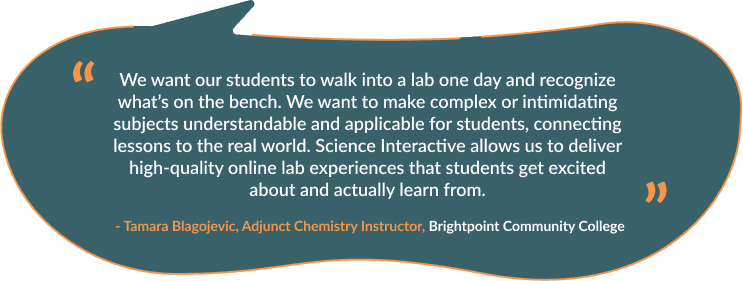
3. Leverage a Variety of Multimedia for Content Delivery
Video has revolutionized the delivery of information. In fact, new research digs deeper into why students prefer YouTube to study and learn, while additional studies find that 83% of people prefer watching videos to access information or instructional content.
Video, images, and other digital media are important tools that can help bolster the educational experience, working to illustrate complex ideas with the help of visual and audio learning elements. In addition to keeping students more engaged with your content, multimedia promotes:
- A deeper understanding: According to research, a benefit of multimedia learning is that it takes advantage of the brain’s ability to make connections between verbal and visual representations of content, leading to a deeper understanding, which in turn supports the transfer of learning to other situations.
- Improved problem solving: Using images, video and animations alongside a text stimulates the brain. Student attention increases, allowing students to identify and solve problems more easily compared to a scenario where text is the only medium for consumption.
- Increased positive emotions: Using multimedia during instruction can impact a student’s mood and induce positive emotions during the learning process that in turn facilitate better comprehension.
With any media or resource you provide students, be sure it’s accessible. Content accessibility means that it is properly designed, specifically for people with disabilities, so everyone can understand, navigate, and interact with the content presented. As a quick gut check, always ask yourself these questions:
- Do all videos and audio have captions and transcripts?
- Will a screen reader correctly read all aspects of the program?
- Can the entire program be navigated with just a keyboard?
- Will the program work with low-quality or unreliable internet access?
- Can the lab be completed on a phone or tablet?
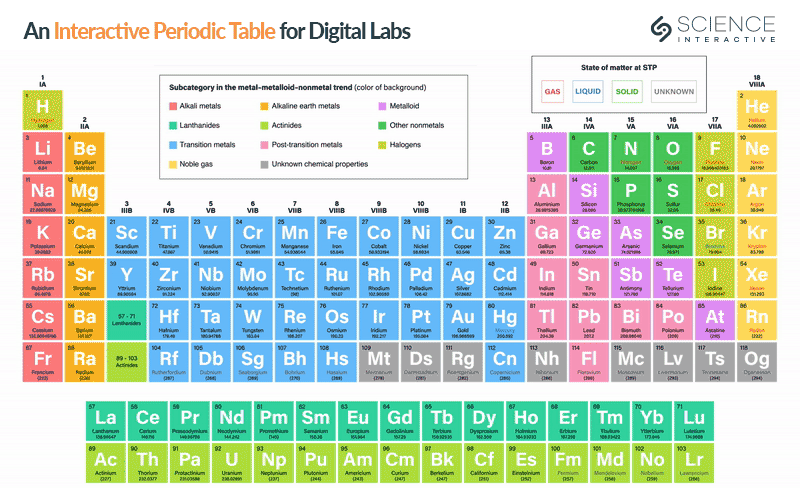
How To Optimize Your Use of Multimedia
Consider employing a variety of multimedia, including video, to deliver your course materials.
✔ Use open educational resources and other forms of readily available media, like podcasts, simulations, case studies, images, video, multimedia, and interactive learning objects to deliver concepts to students.
✔Share perspective through recorded video microlectures to synthesize key concepts in the course material.
✔ Post friendly video reminders of due dates or lab reminders. When you offer instructional content and resources in a variety of ways, you’re going to be able to reach a broader set of students.
✔ Encourage students to submit assignments using a variety of multimedia, from pictures and video to written text and audio.
Offering students resources and a choice in how they show evidence of completing their labs but still fits within your parameters will give students a broader range of expression and support a more inclusive approach to learning. All together, a multimedia-rich learning environment will have a direct and positive effect on your students’ learning.
4. Build Community through Connection, Communication & Collaboration
Whether it be the lack of face-time with instructors or other students or the sense of isolation online learners may experience, online learners struggle more than those in face-to-face courses — and part of the reason is attributed to the loss of natural interaction and community they would experience in an on-campus lab.
Don’t underestimate the power of building community. When a class becomes a community, students change from being passive learners to active learners. Building community also changes the class experience from impersonal to personal. A hefty amount of educational research highlights the benefits of collaborative learning. For example, a national study of more than 80,000 first-year and senior college students found that participating in a learning community, where a group of students takes multiple classes together, was associated with higher levels of engagement, satisfaction and learning outcomes.
When students feel they belong to a class community, they are more likely to be motivated to complete class work, feel safe enough to ask questions or for more help, and be open to feedback that can help them improve.
How To Promote Community
Beyond being the content expert, you now must step into the often-unspoken role as an online community builder in order to create meaningful moments for interaction and collaboration online. Here are some ways to do it.
✔ Facilitate Online Lab Partners
Hands-on labs are application-based learning experiences for students, and that kind of learning is best done with members of their own learning community. So one of the most impactful ways to facilitate this is to consider creating online lab partner pairs. To do this, pair up students at the beginning of your course, similar to how you would for your on-campus labs. Encourage students to use course chat and video to discuss both expectations and results of their experiments. Some students might even want to conduct those experiments together via live feeds with one another. In addition to working together through assignments, each student now has built-in peer support and someone they can go to — besides you — to ask questions and share experiences. With each hands-on lab, you have a built-in scenario to create connections among students and build community.
“When I think back to my undergrad days, the first thing that comes to mind are my lab partners. Working together to navigate experiments, course correct problems, hypothesize outcomes, and just having someone to lean on when course material felt exceptionally challenging was so valuable. It’s been so heartening to see the instructors we partner with embrace and replicate this concept in their online lab course.“
Cait Runne-Janczy, PhD, Chief Academic Officer, Science Interactive
In addition, hands-on lab lessons provide an opportunity to layer in scenario-based assignments—or activities where students can apply theoretical knowledge to a situation in order to develop stronger critical thinking skills. Experiments provide the perfect event for this, during which you can pair up students to work together, developing hypotheses and interpretations before an experiment, and compare results post experiment. They can work together to navigate labs, as well as course correct problems. The results: a team effort where students feel more connected and as engaged as they would in an on-campus setting.
✔ Use Course Discussions
Use your LMS to engage students in an online course discussion about a particular lab as part of the class curriculum to help them not only improve their critical thinking skills but also encourage them to engage with others in the class in a meaningful way. Use thoughtful prompts, like discussing expectations vs results of a particular experiment, to establish this conversation as a forum to connect with each without the pressure of a graded assignment. During these online discussions, encourage students to share videos and photos of their experiment setups and their thoughts. When students include media with their discussion, they’re more likely to engage.
You can also create student-led discussions, assigning student leaders for each lab. These students are responsible for facilitating the discussion, which includes asking course participants different questions, opening the group up to different perspectives, and encouraging participants who are making unclear contributions to give examples and factual evidence of their points.
You can also create small-group discussions. Send students off into their own discussion pairs or small-groups to share their lab results for particular experiments on your course discussion boards; assign a discussion leader for each lab and have students compare and contrast results and hypothesize why there might be differences.
Studies show that these kind of online discussions, including student-led ones, enhance community and encourage other students’ participation, while also being beneficial for learning outcomes — generating innovative ideas and providing a risk-free, more relaxed atmosphere for discussion.
✔ Incorporate Students’ Experiences & Expertise
Students come to your course with a wide range of knowledge and experiences, and have insights to share. Invite students, independently or in small groups, to solve organic chemistry problems, for example, in front of their peers (virtually) and explain their solutions. Involving students as teachers heightens interdependence, mutual respect, and engagement—valuable components for building community.
✔ Provide Real-Time Opportunities
While most online courses are meant to provide flexibility for students, many students appreciate opportunities to interact live. You can give them options to connect virtually via group projects and synchronous meetings to keep them engaged. Have them use the chat, discussion, and video tools available in your LMS or elsewhere to connect.
| Case Study Spotlight: BrightPoint Community College While students perform their hands-on experiments independently from home, chemistry Professor Tamara Balgojevic sorts students into smaller groups to work through lessons together, which enables students to collaborate and learn from one another throughout the course. Experiencing labs this way better reinforces the lessons and helps students more easily apply course concepts to the real world — helping build class community and make the discipline feel more relatable and less intimidating. |
Many of these tactics require a set of online communication tools, but with the right tools and flexibility to try new community-building activities throughout your course, you can help students learn together.
Your Checklist for Teaching Engaging Labs Online
Learning online is hard enough — and your discipline faces additional obstacles others don’t. When you focus on creating an online environment that values social connection, consistency, community, and experiential learning, students are more likely to engage and come away with a more meaningful experience. As a final note, the technology you choose to facilitate the strategies covered in this guide is critical. When implementing these strategies, the last thing you want to do is create additional obstacles for students that lead to less participation. So keep in mind the following:
✔ Don’t Create Additional Barriers: Don’t make things hard to access or find, hard to follow, or hard to use. You’ll be inundated with emails from students and spend more of your time there than on actual teaching. Rather, find technology and tools that are intuitive to students. This is important because most online learners are looking for the quickest way to achieve their goals and expect speed at all points in their online learning experience.
✔ Don’t Shy Away from Collaboration: As humans, we are social creatures. We need human interaction. And when students are not collaborating with classmates, they miss out on that social element, new perspectives, alternative ways to solve problems, and opportunities to practice providing and receiving feedback. Consider implementing instructional strategies and tools that provide those same kinds of in-person opportunities online. Consider peer reviews and guided collaborative activities to help you increase student engagement.
✔ Don’t Spend Time Doing Manual Work if You Don’t Have to: Online learning, like its name implies, should be a technology-enabled process that removes administrative burden. When you implement a lab management platform to facilitate online courses, you’re going to eliminate many of the manual, often time-consuming tasks many instructors spend hours on. Make sure your platform has streamlined grading capabilities, plagiarism detection, and assessment analytics — all integrated with your LMS so you never have to leave the lab management system.
✔ Don’t be Leary of Analytics: Data is our friend — you know that best. So what if you knew which students in your online labs were struggling or needed more attention. With assessment analytics baked into your lab management platform, you now have data behind your hunches on who may need additional support, so you can provide that extra layer of guidance that gets them back on track.
With these reminders top of mind and these engagement strategies a part of your online course toolkit, you’ll be able to kick student engagement into high gear. Remember, just like the classes you remember most, the most engaging courses will adapt to the way students learn, introduce a variety of approaches throughout the course, and as a result, deliver an effective and meaningful experience from wherever students choose to learn.
Building better lives and a brighter future by empowering scientific literacy for learners everywhere.
Science Interactive empowers its campus partners to deliver authentic lab experiences for every student through hands-on labs and world-class digital simulations that provide students with the knowledge and skills they need—no matter how far they are from campus. Our complete lab solution combines customizable kits, a rigorous digital curriculum, and cutting-edge technology that makes it easier to create and deliver a hands-on lab experience for students in online courses. Over 800 institutions nationwide partner with Science Interactive to expand their online science programs, increase student engagement, and improve success rates.
To learn more, visit scienceinteractive.com.
Discover more articles
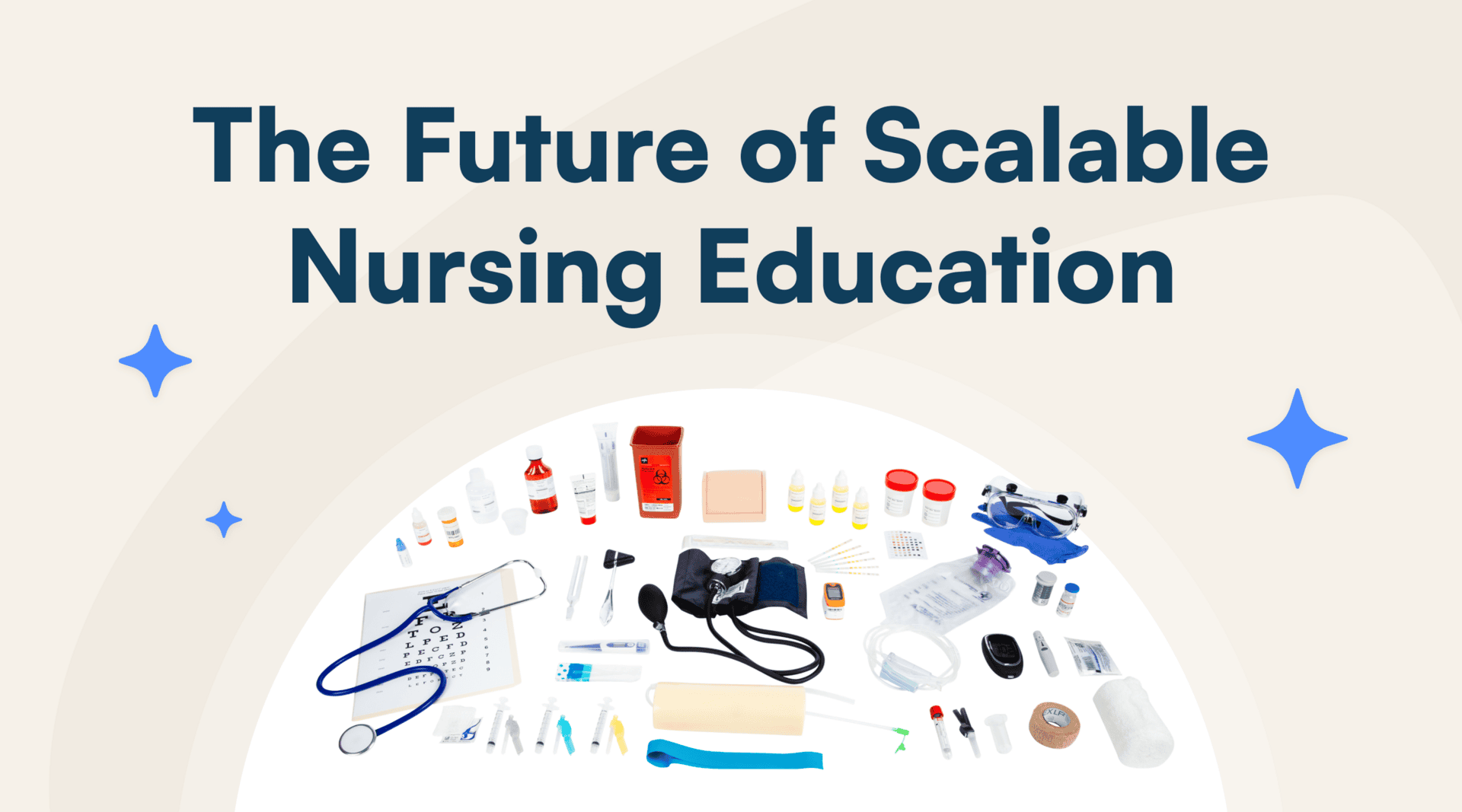
Science Interactive Launches New Nursing Fundamentals
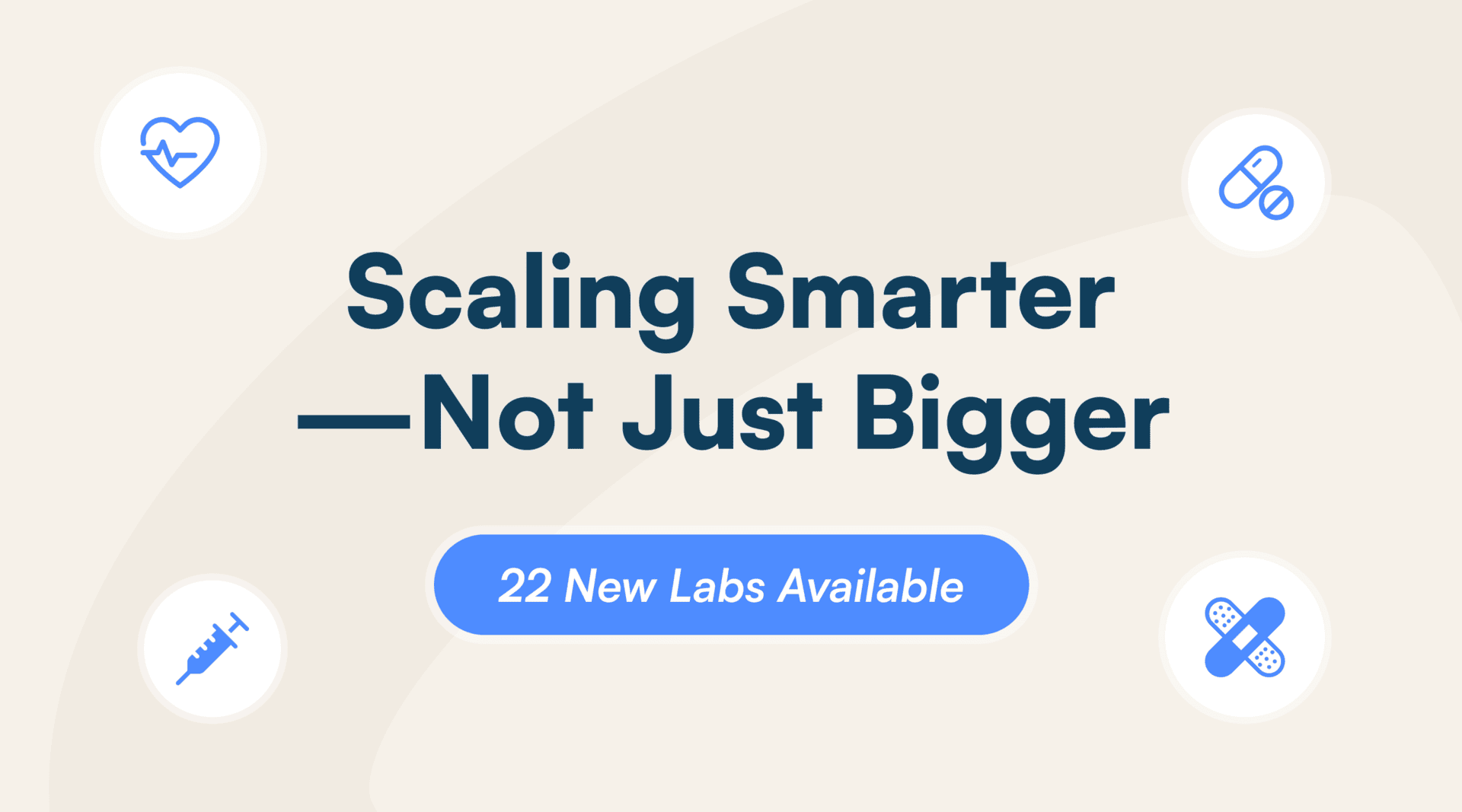
What Clinical-Ready Actually Looks Like (And How to Get There Sooner)
